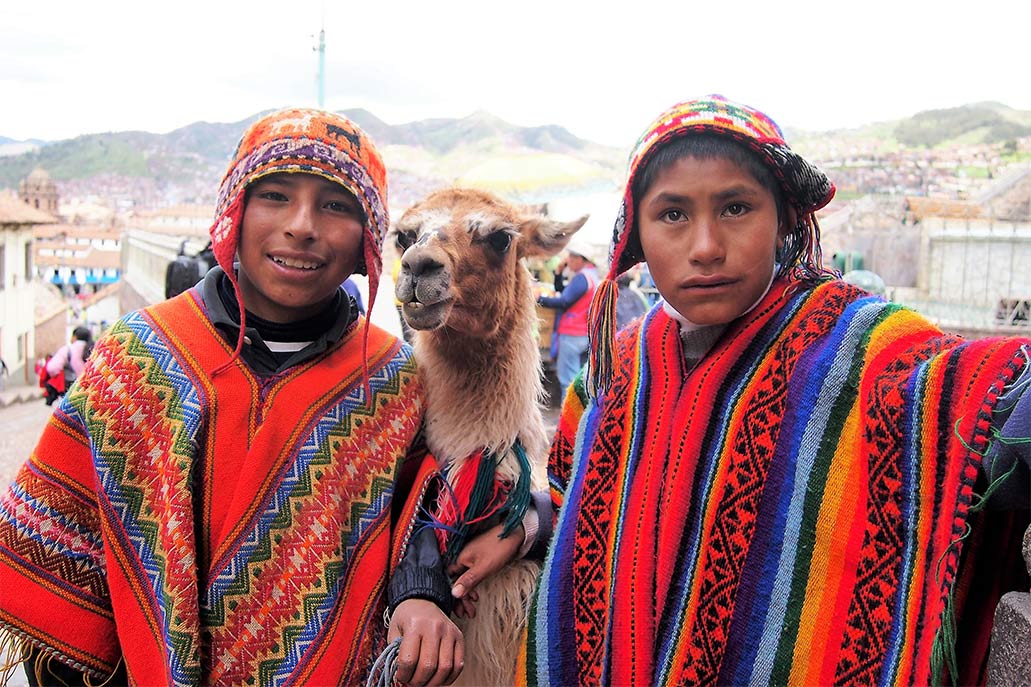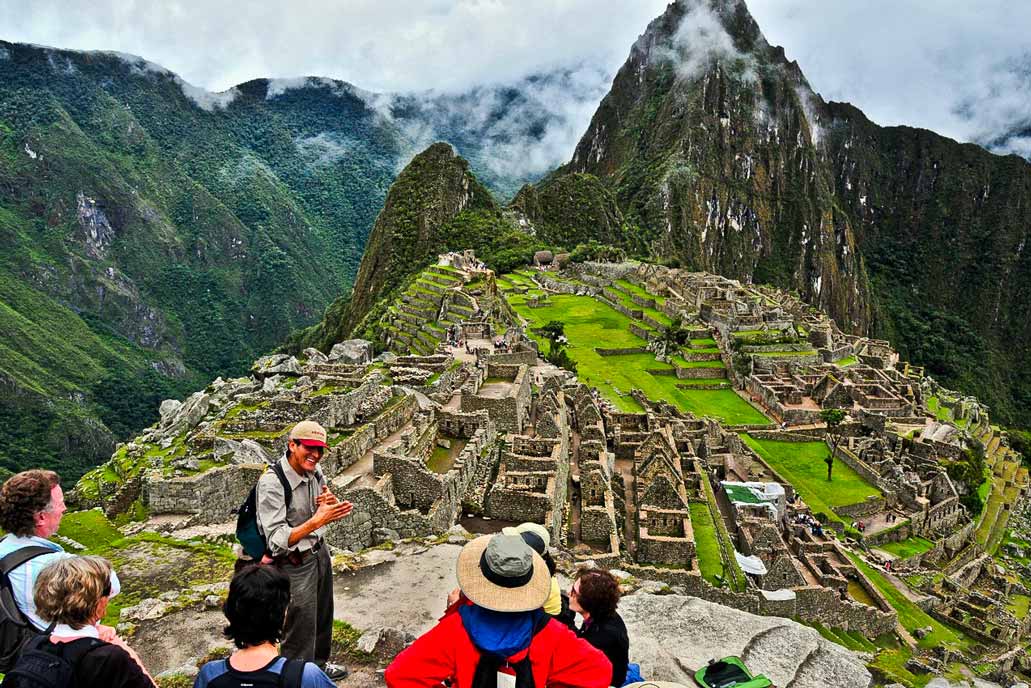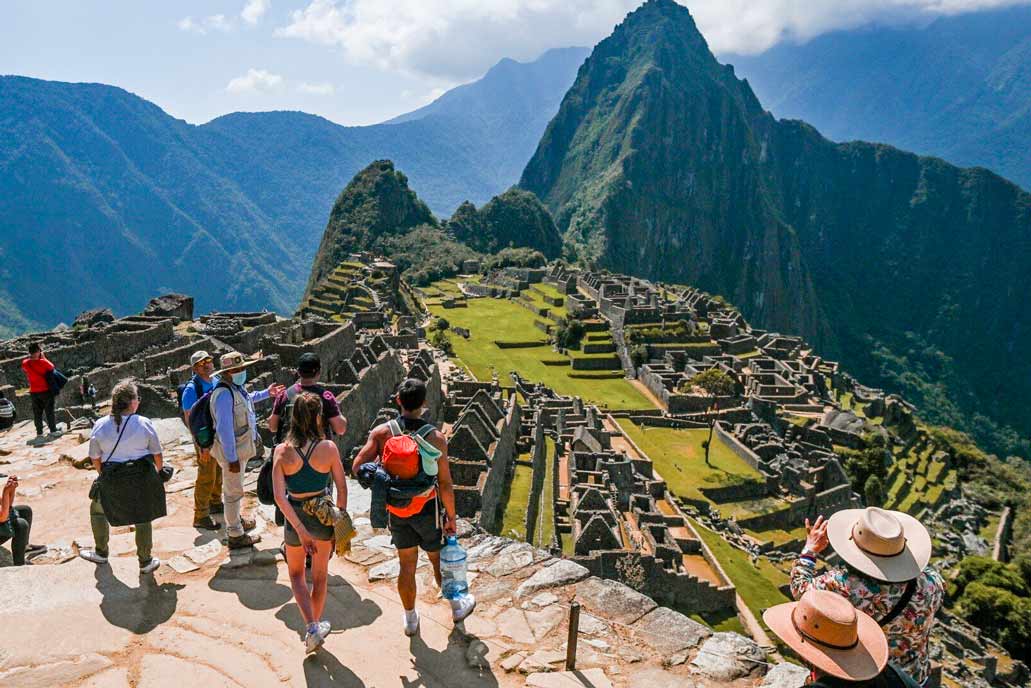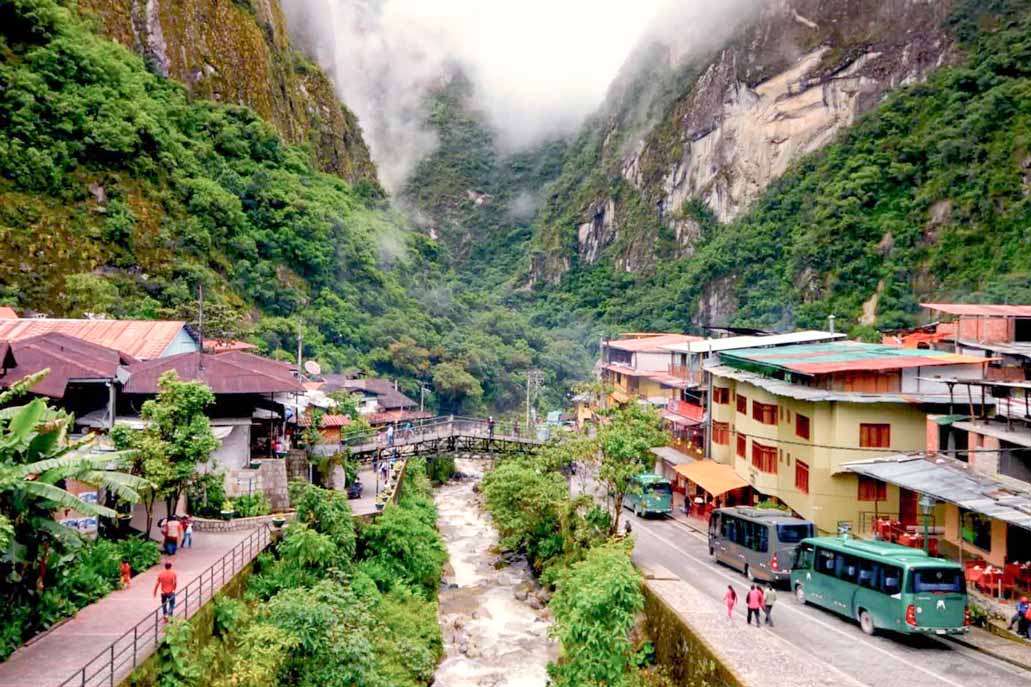Language on your trip to Machu Picchu: keys to communicating without problems
When traveling to Machu Picchu, it’s important to consider how to manage communication during your visit. Although Spanish is the primary language, you may encounter situations where the language may cause confusion. In this blog, we’ll offer practical tips to help you communicate effectively, resolve any language issues that may arise, and allow you to fully enjoy your trip to Machu Picchu.

Content
Language in Machu Picchu and tourist areas
What language is spoken in Machu Picchu?
Don’t worry! It’s important to take a break to enjoy this trip. In Aguas Calientes and Machu Picchu, most people speak Spanish, as it’s the official language of Peru.
On the other hand, you may also encounter people who speak Quechua. If so, they will most likely be happy to offer their help. They are very friendly people who will surely leave a pleasant impression on you during your visit.
Can you visit Machu Picchu without speaking Spanish?
Of course, you can visit Machu Picchu without speaking Spanish. Many travelers who visit the citadel come from countries where Spanish isn’t the primary language, so learning it isn’t mandatory to enter Peru.
Is this necessary? If you want to share experiences or have more enjoyable conversations with locals, it’s a good idea to learn some basic words so you can hold your own in a conversation. Write this down! Don’t worry if you don’t speak Spanish fluently; Cusco residents are very friendly, and even if they don’t speak your language, they’ll always be willing to help you communicate.
Do the guides at Machu Picchu speak English?
Of course, the guides at Machu Picchu speak English! If you booked through a travel agency like iMachupicchu, they’ll likely include a bilingual tour guide (Spanish and English) so you don’t miss a thing in the Machu Picchu citadel. Even if you choose to travel on your own, you’ll find guides available near the entrance gate.
It’s important to know that most travel agencies and tour guides offer services in English. Some also offer services in Italian, Portuguese, French, and Mandarin Chinese, although the latter tend to be more expensive. If you speak another language, we recommend learning English before arriving in Peru, as it will make it easier for you to find guides and travel agencies that offer their services in that language.
Is it common to find people who speak English in Cusco?
In Cusco, it’s not common to find people who speak English. Most residents speak Spanish, and very few people are fluent in English. Why? Not everyone works in the tourism sector, and those who do generally don’t have direct contact with foreign tourists.
If you’re on the go, a good communication strategy is to use a translator on your phone. This will allow you to establish fluid communication and even negotiate when making purchases.
What language do Peruvians speak in the Cusco region?
According to official figures, Peru has approximately 32 million inhabitants. The most widely spoken languages are Spanish, Quechua, and Aymara. These last two are two of the 47 registered native languages. Of all the native languages, only four are spoken in the Andes Mountains. The other 43 belong to specific areas of the Peruvian Amazon. It is estimated that more than 150 native languages once existed. With the arrival of the Spanish, many were lost, most of them in the Amazon region.
Peruvian law stipulates that Spanish and native languages are the official languages of the country where they are predominant. Indeed, Spanish is present throughout almost all of Peru. Quechua is also predominant in the Andean region. In the Altiplano region, Aymara is predominant.
Useful Spanish phrases for your trip
What phrases should I know in Spanish if I travel to Machu Picchu?
Here I share some Spanish phrases you could use during your trip to Machu Picchu, before, during, and after your visit. I’m glad you’re interested in handling some situations on your own and not relying so heavily on your travel agency. It will be worth the try!
- Hola, ¿cómo estás? – Hi, how are you?
- ¿Dónde está el baño? – Where is the bathroom?
- ¿Cuánto cuesta esto? – How much does this cost?
- Quisiera comprar esto. – I would like to buy this.
- ¿Puede ayudarme, por favor? – Can you help me, please?
- No hablo mucho español. – I don’t speak much Spanish.
- ¿Habla inglés? – Do you speak English?
- Estoy perdido/a. – I’m lost.
- Necesito un taxi. – I need a taxi.
- ¿Cuánto tiempo toma llegar? – How long does it take to get there?
- ¿Dónde está la estación / el hotel / el aeropuerto? – Where is the station / hotel / airport?
- Quiero ir a… – I want to go to…
- ¿Qué me recomienda? – What do you recommend?
- ¿Es seguro aquí? – Is it safe here?
- Me gusta mucho Perú. – I really like Peru.
What Quechua words can I learn for my trip?
Your intention to learn Quechua is very good. As I mentioned, you might encounter people who speak this language, and if you want to at least have a brief conversation, you could use some phrases like:
- Rimaykullayki – Hola / Hello
- Allin p’unchay – Buen día / Good day
- Allin sukha – Buenas tardes / Good afternoon
- Allin tuta – Buenas noches / Good night
- Ñuqaqa … kani – Yo soy… / I am…
- ¿Imaynallan kachkanki? – ¿Cómo estás? / How are you?
- Allinllam, gracias – Estoy bien, gracias / I’m fine, thank you
- Sumaqmi – Muy bien / Very Good
- Añay / Sulpayki – Gracias / Thank you
- Ama hina kaychu – No, por favor / No, please
- Arí – Sí / Yes
- Mana – No / No
- Tupananchiskama – Hasta luego / See you later
- Mana understand-ni – No entiendo / I don’t understand
- Ayuda-way – Ayúdame / Help me
These Quechua phrases may seem complicated to pronounce, but you won’t lose anything by trying. In some cases, the phonetics are similar to English, making the ‘h’ sound almost like a ‘j’. With this, you’re sure to surprise a Cusco native, as very few people dare to pronounce even one of these words.
Communication in hotels, restaurants and tours
Do hotel and restaurant staff speak English in Cusco?
You should know that Cusco’s tourist area is located in the historic center, where it’s common to find hotels and restaurants with English-speaking staff. This is because many travelers don’t speak Spanish as their native language.
What if I’m far from the city center? If you choose to stay or eat outside the historic center, the staff may not speak English. For more comfortable communication, it’s best to stay and eat near the Plaza de Armas.
If you prefer to stay in another area, a good option is to choose hotels with at least 3 stars, as most of them have English-speaking staff, even outside the city center. This isn’t always the case in restaurants, so be aware of that!
How to order food at a restaurant in Spanish?
How interesting! To help you, we’ll make it much more practical with a clear and direct example to help you achieve your goal.
Note! The one we’re sharing is a standard template that you can use. If you have more specifications or want to add something, you can use a translator to fill in those details.
- Upon entering the restaurant:
- Hi, good afternoon. Do you have a table for one / two / three…?
- Hola, buenas tardes. ¿Tienen mesa para uno / dos / tres…?
- When the waiter hands you the menu:
- Thank you. Could you give me a moment to look at the menu, please?
- Gracias. ¿Me puede dar un momento para revisar el menú, por favor?
- To order:
- I’m ready to order.
- Estoy listo para ordenar.
- As an introduction, I would like to…
- Como entrada, me gustaría…
- For the main course, I want…
- De plato principal, quiero…
- And to drink, a glass of water / a lemonade / a beer, please.
- Y para tomar, un vaso de agua / una limonada / una cerveza, por favor.
- If you have any restrictions:
- Does this dish have meat/gluten/dairy?
- ¿Este plato tiene carne / gluten / leche?
- Could it be non-spicy/onion-free, please?
- ¿Podría ser sin picante / sin cebolla, por favor?
- To ask for recommendations:
- What do you recommend?
- ¿Qué me recomienda?
- What is the most popular dish?
- ¿Cuál es el plato más popular?
- When you finish eating:
- Can I have the check, please?
- ¿Me puede traer la cuenta, por favor?
- Can I pay by card?
- ¿Se puede pagar con tarjeta?
- When you say goodbye:
- Thank you, everything was very delicious.
- Gracias, todo estuvo muy rico.
- See you later, have a nice day.
- Hasta luego, que tenga un buen día.
How do I book a tour to Machu Picchu if I don’t speak Spanish?
It’s very simple; don’t overcomplicate this. The first thing you should do is find a reputable travel agency. How do you know if it’s reliable? You can check their profiles on Tripadvisor and Google to read reviews from other travelers who have already used their services. That will help you decide which agency to choose.
Now, let’s get down to business. Travel agencies know that Machu Picchu also receives many foreign tourists, so when you contact them, they’ll usually respond in English. And if they don’t speak the language, they’ll likely use a translator to help you and explain everything you need to know to purchase your Machu Picchu tour without any problems.
Are the Machu Picchu tours in English?
Travel agencies typically offer shared services in Spanish and English. What does this mean? During the tour, you’ll be accompanied by other people, some of whom may speak Spanish, so the guide will conduct the tour in both languages.
If you prefer a service exclusively in English, you can book a private tour, where you’ll travel with just your friends or family. The price is a little higher, but it’s usually worth it. Be careful! This type of request is more common than you might think, and travel agencies are prepared to accommodate these preferences.
Apps and resources to translate or communicate
What is the best translation app for traveling to Peru?
One of the best and easiest-to-use translation apps is Google Translate, which offers a wide range of languages (243), enough to communicate with almost anyone in the world. It’s available in both web and mobile versions, making it very versatile.
If you’re traveling to Peru, it’s important to use simple phrases and words (avoiding common slang) when using the translator. Why? Because this tool tends to translate very literally, which can lead to confusion.
How to translate from English to Spanish without internet?
This topic can be a bit complicated, but there is a solution: the Google Translate app, which allows you to translate offline as long as you’ve previously downloaded the offline translation packages. This way, you’ll be able to get by while you find somewhere with a connection, such as Wi-Fi networks offered by hotels and restaurants.
A good option is always having internet access. If you’re near Cusco’s Plaza de Armas, you can head to Ayacucho Street, where you’ll find stores selling mobile services, such as chipset phones from CLARO, MOVISTAR, and BITEL. Here you can buy a chip with a good mobile data package, which will allow you to stay connected during your trip.
Which translator works best in rural areas?
In rural areas, there is no fully functioning translator, as internet connection is often unstable or nonexistent. If you travel to Machu Picchu, it’s important to know that you can only access the internet in Cusco, at the Ollantaytambo train station, in the town of Aguas Calientes, and near the entrance to the Machu Picchu citadel, where you may be able to use a translator.
If you choose to reach Machu Picchu via trekking routes, such as the Inca Trail, you should be aware that cell phone service is practically nonexistent. It will be a unique experience to disconnect from the everyday world, surrounded by landscapes that will make you forget the internet exists.


